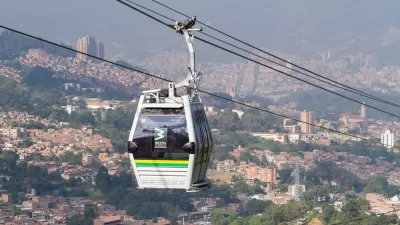Josh Stephens muses on the modern state of an erstwhile global capital that has kept its aesthetic charms, but lost its anima.
Once the beating heart of commerce, art, and culture across the globe, Venice will never lose the charm of its physical spaces. The basic density and walkability underlying the design of the city evoke images of bustling Renaissance street life. But with roughly three million tourists passing through each year – more than ten times the number of permanent residents – the experience of the city can feel a little artificial, laments Stephens (who estimates a tourism figure almost six times higher).
"What's strange about Venice is that it is still, technically, a city, with residents, an economy and a government," he writes. "And yet, perhaps nowhere else in the world does the relationship past and present fall so surreally, credulously out of balance."
While some have likened Venice to a museum, Stephens prefers the image of an amusement park. Perhaps more relevantly, he argues that recognizing the beauty and the strengths of our own existing spaces is the key to having them serve us as well as Venice once served its own people.
"You can still visit a million live cities and still believe that their best days are ahead of them. And you can believe that you can be a part of them. That goes as much for historical giants like Paris and London as it does for upstarts like Dubai and Bangalore. For all of the challenges in the U.S., it applies to nearly every American city."
FULL STORY: City, Museum or Amusement Park? The Problem With Venice

Planetizen Federal Action Tracker
A weekly monitor of how Trump’s orders and actions are impacting planners and planning in America.

Restaurant Patios Were a Pandemic Win — Why Were They so Hard to Keep?
Social distancing requirements and changes in travel patterns prompted cities to pilot new uses for street and sidewalk space. Then it got complicated.

Maui's Vacation Rental Debate Turns Ugly
Verbal attacks, misinformation campaigns and fistfights plague a high-stakes debate to convert thousands of vacation rentals into long-term housing.

In California Battle of Housing vs. Environment, Housing Just Won
A new state law significantly limits the power of CEQA, an environmental review law that served as a powerful tool for blocking new development.

Boulder Eliminates Parking Minimums Citywide
Officials estimate the cost of building a single underground parking space at up to $100,000.

Orange County, Florida Adopts Largest US “Sprawl Repair” Code
The ‘Orange Code’ seeks to rectify decades of sprawl-inducing, car-oriented development.
Urban Design for Planners 1: Software Tools
This six-course series explores essential urban design concepts using open source software and equips planners with the tools they need to participate fully in the urban design process.
Planning for Universal Design
Learn the tools for implementing Universal Design in planning regulations.
Heyer Gruel & Associates PA
JM Goldson LLC
Custer County Colorado
City of Camden Redevelopment Agency
City of Astoria
Transportation Research & Education Center (TREC) at Portland State University
Jefferson Parish Government
Camden Redevelopment Agency
City of Claremont



























